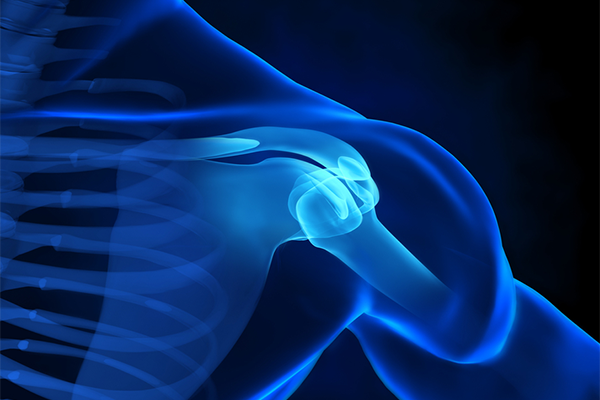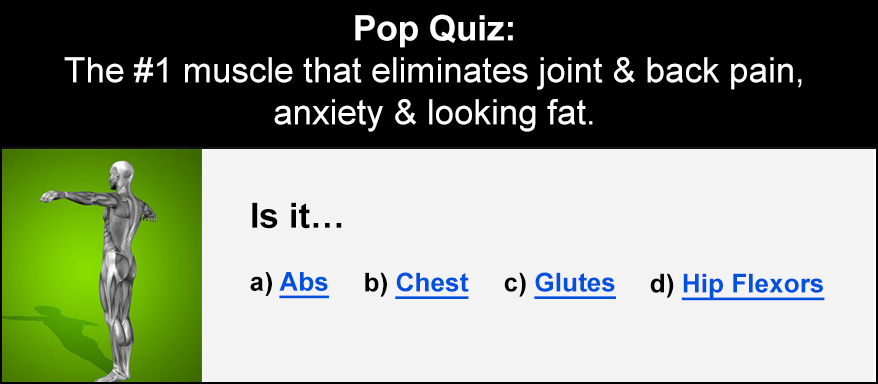
Nearly half of all people will complain of shoulder injury during their life. The shoulder is a problem joint for 2 reasons:
- It’s easily injured
- It’s incredibly important in everyday life
This is why avoidable problems like rotator cuff (or ‘RC’) injuries are a real concern. They’re unnecessary, they’re debilitating, and they lead to a cycle of immobility and weakness that can easily persist for the rest of your life.
If you’re dealing with shoulder problems or you’re a senior, you’re going to need to pay attention. We’re going to take you through how to reduce the risk of RC injury – information that is going to make your life much happier and healthier.
The Rotator Cuff: What you need to Know
The rotator cuff is a part of the shoulder joint. IT keeps the shoulder stable and is one of the most important aspects of arm movement as it allows you to elevate your arm overhead and remain stable in 3-dimensions.
This is key because your shoulder can move in more directions, and with more range, than any other joint in the body. This is why you’re able to do many of the movements we rely on every day, but it also means that it carries a greater risk of pain and injury than most other joints.
The shoulder is important in sports and exercise – it’s a key part of every movement from running to throwing. If you’re looking to enjoy an active lifestyle as you age, taking care of this joint is essential.
The Risk of Rotator Cuff Injuries
As mentioned above, the shoulder is often injured or causes pain. Studies in healthy athletes in their athletic prime suggest that injuries are an 8-20% risk year-on-year. This is even greater when we consider pain: 43% of athletes suffer with unspecified shoulder pain in a year.
This is only likely to get worse as we age. As well as overuse and postural problems of the shoulder, degenerative problems pose additional risks during the aging process. The tissues that hold your shoulder joint together deal with regular wear-and-tear and slowly degrade over decades.
These can increase the risk of shoulder injuries. They can lead to joint-alignment problems such as impingement and atrophy. This is when movement is limited by friction between different parts of the shoulder, or decreased muscle control getting worse over time.
Clearly, these are important concerns. The ability to move the shoulder freely is key to quality of life. Pain-free movement in this joint isn’t something you can take for granted, and involves getting a lot of things right. Stick with us and we’ll describe the principles that make for good RC health and risk-prevention!
How to Improve your Rotator Cuff Health
There are 3 key factors in keeping your rotator cuff healthy:
- Strength
- Stability
- Tendon Stiffness
There might not be many players in the health of the shoulder, but they are complicated to understand and train. Fortunately, we’ve taken the complexity out of this with this article.
Strength
Strength in the muscles around the rotator cuff is important. If you have enough strength in these areas and balanced muscle-strength, the ball of the shoulder will be held in place and the tissues around the joint will be stable.
If forces are too weak, or they’re unbalanced and pull in one direction excessively, you’re likely to struggle with impingement or loss of alignment. These can result in pain and injury, such as tears. Keeping the muscles healthy and strong is essential.
Stability
Once the muscles are strong, it’s important that they’re able to provide stability. This takes two forms: static and dynamic.
Static stability is when you’re dealing with instability that doesn’t move by itself – only when you move it. This includes things like balance boards and exercise balls: they’re not going to move by themselves. You just have to focus on staying still and balanced.
Dynamic stability is the kind of ever-changing instability you deal with in real life. The muscles have to be able to adjust on the fly and absorb/stabilise during this process. This can be trained in a variety of ways, and physiotherapists often use it to rehabilitate injured, stiff joints.
Tendon Stiffness
The tendons attach the muscles to the bone. They are crucial for keeping your shoulder healthy as they are elastic tissues and they effect how much “purchase” your muscles have on the joint.
Tendons that are weak and lax increase your risk of shoulder injury, as you have reduced control over the joint and it is easier to mis-align. This is also a key risk in falls and fractures.
Fortunately, you can actively train your tendon stiffness and improve their health. This means that, even if you’ve got some laxity now, you can improve your long-term tendon stiffness and shoulder stability.
Progressions and Exercises
When you’re trying to deal with health, rehab or injury-prevention, the key is progression. It’s about patiently working through exercise to get better – rather than jumping into serious weight training.
Following the step-by-step process described here is an easy way to improve your shoulder health with very low risk of injury. Starting at the beginning is crucial to ensure that you’re not going to load the shoulder too much too soon – this is how injuries happen!
Movement
If you’re really struggling with your shoulder, the first step is to move it. Once you’re pain-free and able to move, you should do so as soon as possible.
Movement is key to keep the shoulder healthy – if you don’t move it, you’ll lose mobility altogether and this can be a slow process to undo.
Post-injury, you can unload the shoulder with slings to focus on movement. One great example of this is an exercise where the arm is suspended and you simply rotate the shoulder across your body and then away from your body.
These types of movements keep the shoulder moving to reduce build-up of scar tissue and adhesions in the joint. If those set in, you’re going to have a “frozen” shoulder.
Mobility
Keeping the muscles mobile and ensuring that you have control over the huge range-of-motion of the shoulder is key to keeping it healthy. Unstable movement is a huge risk for injury and poor mobility means that there are a lot of “dangerous” positions for your shoulder.
Staying mobile is also about making sure that none of your muscles are excessively tight or weak. These problems will stretch tendons or pull the joint out of alignment. We see this all the time: tight chest muscles cause impingements in many people. Mobility reduces this risk significantly.
There are a number of glide movements that you can use to keep the muscles healthy and practice good movement patterns. These focus on moving through good positions while stretching out the muscles – two key factors in staying healthy and mobile.
Simple Closed-Chain Movements
These exercises are the first step towards developing shoulder awareness and strengthening. They can be used by anyone, but they were initially used for rehabilitation exercise.
These exercises can strengthen the muscles, but the focus is on actively holding key positions to improve shoulder posture and static stability. They make sure that key muscles are ‘activated’ to stabilise the shoulder joint – a key part of re-learning proper positioning and joint alignment.
The ability to move the shoulder blade and use these key muscles is one of the most important factors in whether or not you’re going to get injured.
Closed-chain exercises include “Push-offs”, which are where you should start to train basic control and stability. You can also practice the specific angles where you’re weak using balance boards and other forms of static stability. These exercises basically teach you to use your shoulder properly and stabilise it under challenging conditions.
They all focus on activating all of the muscles surrounding the shoulder, crucially. You can strengthen muscles, co-ordination, and improve activation all at once.
Active Range Exercises
These are exercises that start to train the shoulder in active movements, or in ways that challenge stability under load. They load you in more challenging ways that aren’t just stability or mobility. They add a little challenge, and they’re the kind of exercise that bridges the gap between normal rehab/injury-prevention and strength exercise.
They’re a great way to improve the quality of your movement and strengthen the muscles involved in stabilising the shoulder. If Closed-chain was all about building static stability, this is all about using that stability during movement and focusing on the same control through movement, rather than just holds.
The best example is the wall slide. This is a key exercise for engaging under-used muscles, and it keeps the shoulder blades and the ball of the joint in the right positions. Combine the wall slide with the “YTWL” exercise to train movement in the front and back of the joint. These build the opposite muscles, balancing out demand and building control of the whole joint.
Open-Chain Exercises
These are even more similar to the types of exercises you’ll usually see in a gym. They involve loading the shoulder joint, lightly, at disadvantaged positions.
By loading the shoulder as far away as possible, we challenge control and strength in the muscles. This is also specific to the things that you do in your day-to-day life, like raising your arm up to reach for objects, or holding them in front of you.
The lateral raise is a shoulder exercise that we often see in bodybuilders. It’s great for strengthening the shoulder in tough positions. Focus on using the same control from earlier exercises and start with bent arms, straightening them more as you develop the strength and confidence to load the shoulder more.
The pallof press is a great way of using Open-Chain exercise for shoulder health. It’s an exercise for the core, but it also challenges you in a straight-arm position – exactly what we’re looking for.
Get Strong: Weight Training
If you’ve gotten comfortable with the type of exercise mentioned above, you can return to normal weight training. This should focus on the same good positions, using earlier exercises to warm up for weight-training.
Movements like the 1-arm Dumbbell bench press or standing Dumbbell shoulder press are great ways of developing stability and control in the shoulders. Start with dumbbells before moving to barbells: they require more development of the stabiliser muscles, keeping your shoulders healthy.
You can also perform resistance band exercises like the resisted “punch”. This is a great way of focusing on a “reach” movement under load, strengthening the pattern for everyday use.
Guidelines for Using Weights Safely
There are some essential rules for using weights safely during injury-prevention.
- Technique comes first
If you only learn one thing from this section, it should be this. Technique is absolutely essential to wellbeing and effective strengthening.
There’s no benefit to cheating weights or allowing ‘form’ to break down in order to blast out those reps. You’d better serve your own interests by focusing on proper positioning and using the same shoulder positions we used in the rehab/strengthening exercises.
There’s no replacement for good technique. Slow the reps down and focus on controlled, accurate movement. This improves your motor control and reduces the chance of erratic movement and, thus, injury.
- Be patient: reps before weight
This is obvious: there’s more injury risk when dealing with more challenging weights. For at least 1-3 months at the start of a strengthening program, you should stay at or above 8 repetitions.
This will allow you to improve volume, work capacity and movement patterns without the risk of injury. You can add weight to these rep schemes as long as you can maintain control but save the heavy weights for when you have more muscle around the joint and have drilled the movement repeatedly.
- You don’t have to feel the burn
When performing strength work, there are a few things you want to avoid: failing repetitions, over-working yourself, or pushing past comfortable ranges.
The ‘pump’ isn’t an indicator of how well you’re doing and the ‘burn’ doesn’t mean results. Focus on good movement and slowly adding more challenging work. Muscle damage isn’t how growth works, so you should avoid chasing the pump or failing sets.
Put the work in patiently, and you’ll improve your health!







